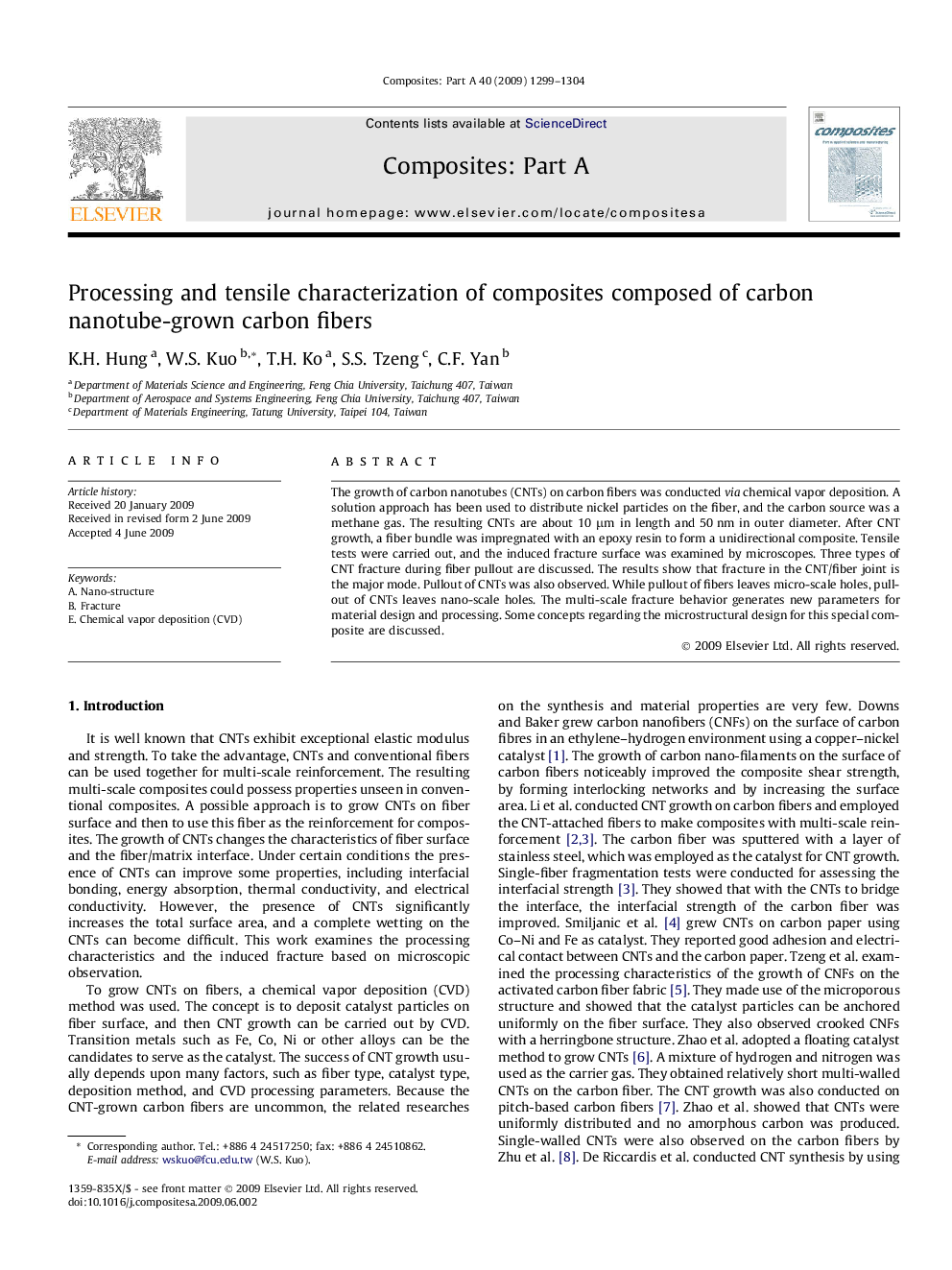| Article ID | Journal | Published Year | Pages | File Type |
|---|---|---|---|---|
| 1467414 | Composites Part A: Applied Science and Manufacturing | 2009 | 6 Pages |
The growth of carbon nanotubes (CNTs) on carbon fibers was conducted via chemical vapor deposition. A solution approach has been used to distribute nickel particles on the fiber, and the carbon source was a methane gas. The resulting CNTs are about 10 μm in length and 50 nm in outer diameter. After CNT growth, a fiber bundle was impregnated with an epoxy resin to form a unidirectional composite. Tensile tests were carried out, and the induced fracture surface was examined by microscopes. Three types of CNT fracture during fiber pullout are discussed. The results show that fracture in the CNT/fiber joint is the major mode. Pullout of CNTs was also observed. While pullout of fibers leaves micro-scale holes, pullout of CNTs leaves nano-scale holes. The multi-scale fracture behavior generates new parameters for material design and processing. Some concepts regarding the microstructural design for this special composite are discussed.
